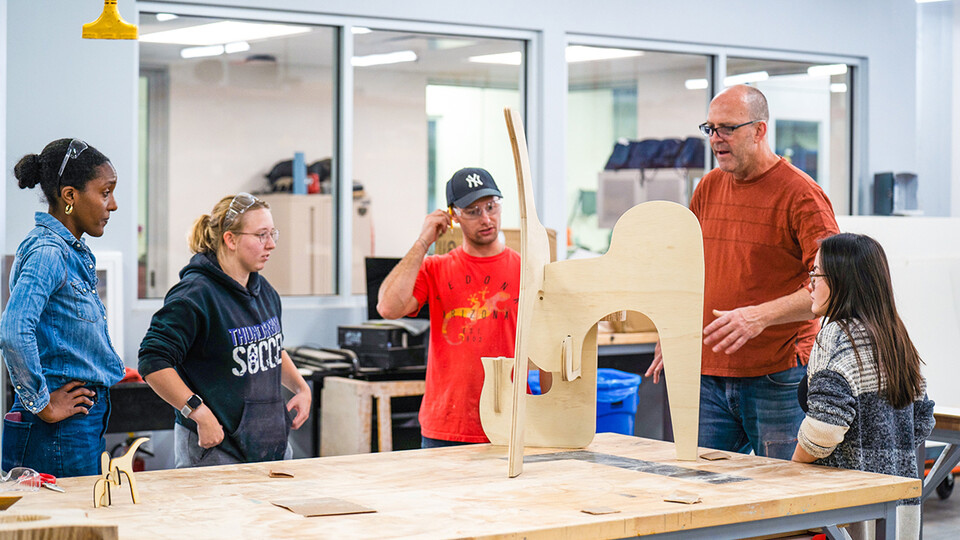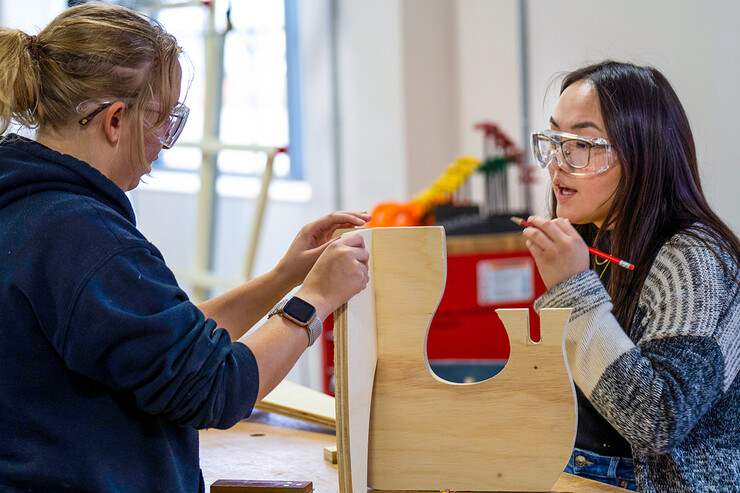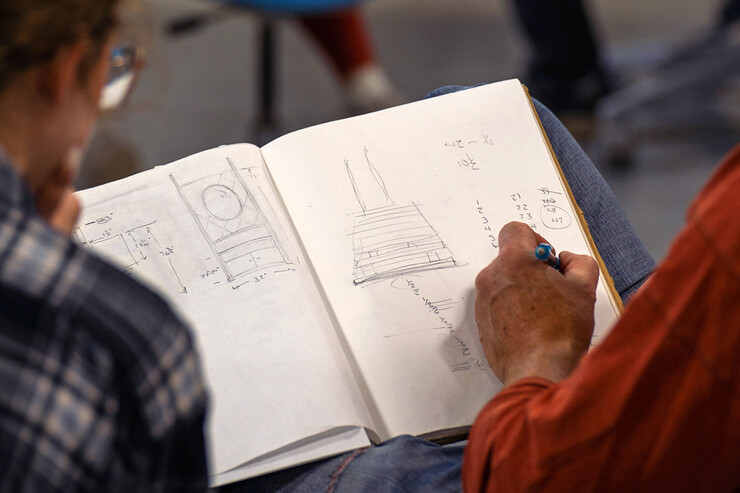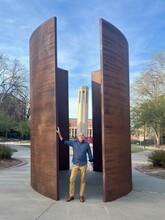· 4 min read
Students sprint through furniture creation

It took 15 architecture students about 12 hours over two days to create five prototype plant stands or coat trees that were practical, aesthetically pleasing and symbolic.
The Godfrey and Roberta Kunzendorf Workshop on Furniture Design, which took place at the University of Nebraska–Lincoln’s Nebraska Innovation Studio, was led by Aziza Cyamani, assistant professor of product design; Roark Congdon, assistant professor of practice; and guest lecturer Christopher Martin, professor emeritus from Iowa State University.
“This is incredibly beneficial to the students,” Cyamani said. “It gets them exposed to materials, helps them understand the possibilities of design and the practical limitations of what they can and cannot make. It is also a new experience for some students with using the equipment, not just the woodworking equipment, but also hand tools, and the digital fabrication tools.”
For the design and build sprint, students enrolled in Cyamani’s product design course worked in groups of three to digitally model their product, and then build it using both analog and digital fabrication methods, including the CNC machine, laser cutter and 3D printing.
“These are students who are pursuing a minor in product design,” Cyamani said. “In class, we look at product design on a comprehensive scale — from the theory of the design process to the application of design making.
“This project has its own considerations as they’re designing. There are beautiful shapes you can come up with, but you also have to push form and function.”
One group of students — Keely Perkins, Brooklyn Ziegler and Justin Supeh — were designing a plant stand with a tree trunk look and branches that ascended to hold the potted plants. They took inspiration and suggestions from both Cyamani and Martin during their sketch and modeling process. Martin met with the class virtually on Oct. 24, and then was in person on Oct. 28 before joining them over the weekend at NIS for the build.
“I enjoyed hearing from him,” Perkins, a junior interior design major, said. “He talked a lot about the possibilities of furniture design. He told us not to be afraid of our ideas, but to be considerate of the function and the overall experience of using these objects because we want the users to cherish them.
“We were pretty excited to get started because it’s a great opportunity to make something, and have expertise here to help us, but it’s also a huge challenge to have such a short amount of time.”
The quick turnaround was both a challenge and an opportunity, said Rhiannon Strazdas, a junior architecture major.
“It is challenging, but it’s also really fun to see a project come together quickly,” Strazdas said. “Most of the time, you have projects that take a whole semester to finish. I’m glad we’re doing this.”
Martin, who designs and builds furniture himself and has collaborated with artists on a global scale, said he wanted the students to unlock their creativity while also grasping different concepts of the furniture-making process.
“Most think of the digital tools as a way to save time, but the area I find really intriguing is the space between, where you use both analog and digital, and using the digital tools for creativity, instead of just as a tool to save time,” Martin said. “Contemporary designers and artists are using these technologies to aid themselves in their work. It’s another tool in their tool kit and I wanted students to think about it in that way.”
The design prototypes will be on display in Architecture Hall.









